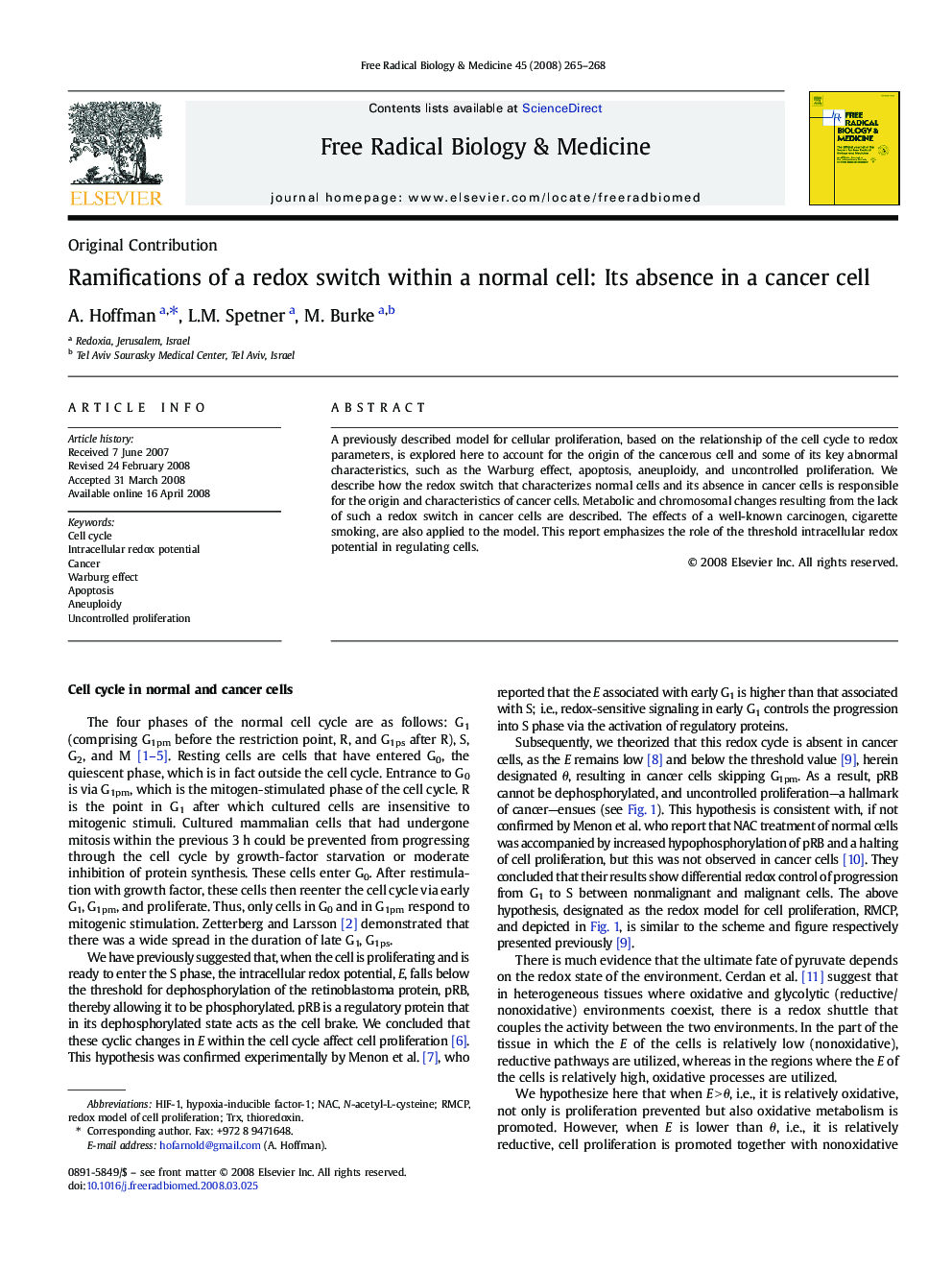| Article ID | Journal | Published Year | Pages | File Type |
|---|---|---|---|---|
| 1910589 | Free Radical Biology and Medicine | 2008 | 4 Pages |
A previously described model for cellular proliferation, based on the relationship of the cell cycle to redox parameters, is explored here to account for the origin of the cancerous cell and some of its key abnormal characteristics, such as the Warburg effect, apoptosis, aneuploidy, and uncontrolled proliferation. We describe how the redox switch that characterizes normal cells and its absence in cancer cells is responsible for the origin and characteristics of cancer cells. Metabolic and chromosomal changes resulting from the lack of such a redox switch in cancer cells are described. The effects of a well-known carcinogen, cigarette smoking, are also applied to the model. This report emphasizes the role of the threshold intracellular redox potential in regulating cells.
